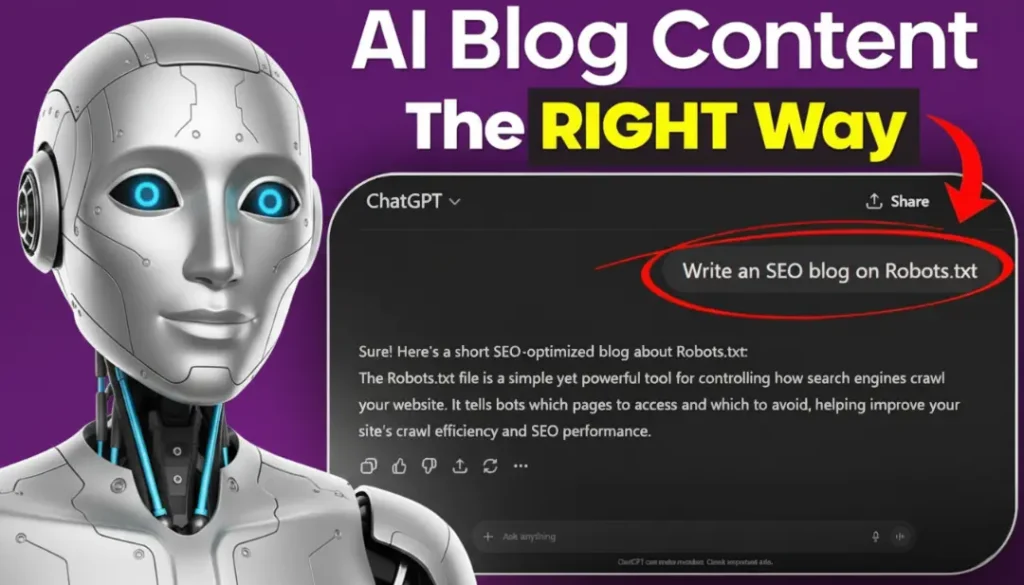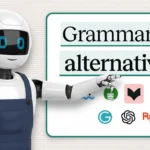Imagine a top SEO site like Search Engine Land turning to AI to write its guides. That’s exactly what happened with their long piece on robots.txt, now called insight engine. They marked it as AI-written, edited by one person, and checked by another. This move sparked buzz in the SEO world, thanks to folks like Glenn Gabe who pointed it out. It raises a key question: how can you use AI for SEO content without messing up your site’s trust or rankings? Search Engine Land’s approach shows a smart path forward. They handle AI-generated SEO blog content in a way that balances speed and quality. Let’s break it down into three clear levels, from risky to rock-solid, so you can pick what fits your setup.
Tier 1: Unreviewed, Pure AI Generation (The Black Hat Zone)
Defining the Unreviewed Standard
Level 1 means AI spits out the full text, and you post it right away. No human looks at it for facts, flow, or anything else. This is pure machine work from start to finish. It’s fast, sure, but it often leads to bland or wrong info. Sites that do this aim to pump out tons of pages quick, like for a glossary or basic SEO blog posts. You just feed a prompt to a tool like ChatGPT, and boom—content lives online. The catch? It misses the human touch that makes writing pop.
Google’s Stance and Risk Assessment
Google frowns on this. Their rules say content should help users, not just game search results. Unchecked AI output can turn into “AI slop”—stuff full of errors or fluff that wastes time. This counts as black hat SEO in most cases, risking penalties like lower rankings or even removal from search. Experts see it as a shortcut that backfires. Why? Search engines want real value, not automated junk. If you push too much of this, your whole site could suffer.
The Publishing Dilemma for Level 1 Content
So, what if you still want to try it? You face two choices. First, claim a human wrote it—basically, lie to dodge the heat. It’s rule-breaking, so why not go all in? Second, own up and label it as straight AI work, no checks added. This keeps things honest but might scare readers away. Either way, think twice. Most pros skip this tier because the downsides hit hard. Stick to better options if you care about long-term SEO success.
Tier 2: Accuracy Reviewed, AI Voice Retained (The Search Engine Land Compromise)
Characteristics of Level 2 AI Writing
In this tier, humans check facts but leave the style alone. The text still sounds like AI did it. Look for signs like M-dashes everywhere—those long pauses that feel stiff. Then there are buzzwords: “invaluable,” “groundbreaking,” “endeavor.” Search Engine Land’s robots.txt guide has lines like, “The AI revolution changes everything we thought we knew.” Or, “When set up right, robots.txt becomes your secret weapon for crawl efficiency.” It feels robotic, even after tweaks. These markers scream machine to sharp eyes. Readers notice, and it can pull them out of the piece.
The Strategy of Transparency and Trust Building
Search Engine Land nailed the fix: be upfront. They said their bot wrote it, but a human edited for truth, and another reviewed it. This calms worries about bad info. People fear AI means lies or outdated facts, so this label builds trust. It shows you care about quality without hiding the process. Readers feel safer knowing experts double-checked. Plus, it fits SEO goals by keeping things clear and user-focused. Honesty like this can even boost your site’s rep in the long run.
Actionable Tip: Beyond Accuracy Edits
Don’t stop at facts—tweak the voice a bit. Swap out M-dashes for simple commas or periods. Cut those overused words to make it flow better. It takes just minutes but changes everything. I covered this in a full guide on making ChatGPT text sound human—check episode 675 if you want the details. Even in level 2, these small steps help. Search Engine Land could have done this and made their guide shine more. Quick edits turn okay AI into solid SEO blog content that readers stick with.
Tier 3: Highly Edited, Human-Quality Output (The Gold Standard)
Defining Level 3: Beyond Machine Polish
Here, AI starts the draft, but humans rework it deeply. The end result reads like a person wrote every word. No obvious AI flags left behind. Edits cover style, facts, and flow, making it engaging and spot-on. This level shines for SEO because it matches what search engines reward: helpful, original work. You get the speed of AI plus the warmth of human craft. It’s ideal for key blog posts or pages where quality matters most.

Attribution Strategy for Near-Perfect AI Content
If it passes all that polish, just credit a human author. No need to mention AI—it’s not lying if the work feels real. Readers get value without the distraction. This keeps things simple and pro. Search engines won’t care as long as it’s good. Why flag the tool when the output stands tall? It fits right into your content plan, boosting trust and shares.
The Rigorous Human-in-the-Loop Process (Search Engine Land Example)
Kyle Atwater Moley from Search Engine Land laid out their steps. They start with Perplexity and Semrush for research and outlines. Content pros check and fix as needed. Claude then writes the first version. An editor reviews, tweaks, and even asks AI to redo parts. It bounces back and forth until it’s tight. A senior editor gives the final nod, often after more rounds. Humans handle project management, images, and uploads too. This takes time—30 minutes to an hour per piece, like in Amos Bar Joseph’s LinkedIn success story from episode 814. He grew from 2,000 to 33,000 followers and hit $1 million in revenue using similar back-and-forth with Claude. The effort pays off in content that ranks and converts.
Strategic Deployment: Where to Publish AI-Assisted Content
Protecting High-Value, Loyal Reader Sections
Not all site areas suit AI help the same way. News or contributor spots draw fans who want real voices. These readers build loyalty through stories and insights. Dumping AI there feels off—they spot the flat tone fast. Keep these pure human to hold that bond. It protects your core audience and keeps engagement high.
Targeting Informational Hubs (Guides and Tools)
Search Engine Land smartly limits AI to /guide/ and /tools/ pages. These spots focus on facts over flair, so AI fits better. Users come for quick answers, not deep reads. A year ago, they added these sections just for this. It works because expectations match the style. You can scale content here without upsetting regulars.
Connecting AI Strategy to SEO Focus
Tie this to bigger SEO wins, like bottom-of-funnel keywords. Lars Lofgren, Neil Patel’s first hire and growth hacking pioneer, stressed this in a recent chat. Target terms that drive calls or sales, not just traffic. My course at compactkeywords.com teaches exactly that—find and hit those key phrases. Amos Bar Joseph’s AI posts nailed this on LinkedIn, pulling in zero-cost revenue. Use AI wisely in the right spots, and it amps your bottom-line results.
Conclusion: Key Takeaways for Implementing an AI Content System
Search Engine Land’s setup gives a clear roadmap for AI-generated SEO content. From raw AI risks in tier 1 to polished gems in tier 3, each level has its place. Pick based on your time, goals, and audience.
Prioritize review depth to match your claims. More human input means you can own the work fully.
For tier 2 pieces that keep an AI edge, transparency wins. Label the bot’s role and human checks to ease doubts.
Finally, if you pour in the effort to scrub AI traces, take full credit. It rewards the work and fits SEO rules.
Ready to try this? Start small in a guide section, edit well, and watch your site grow. For bottom-funnel SEO tips that convert, head to compactkeywords.com. Your readers—and search engines—will thank you.



